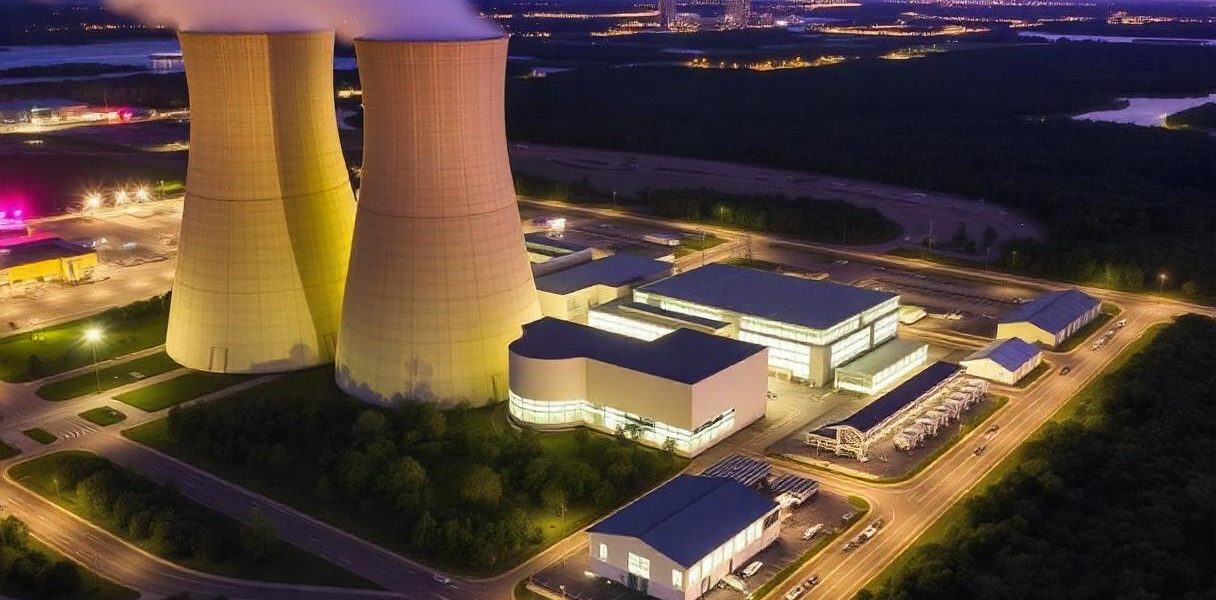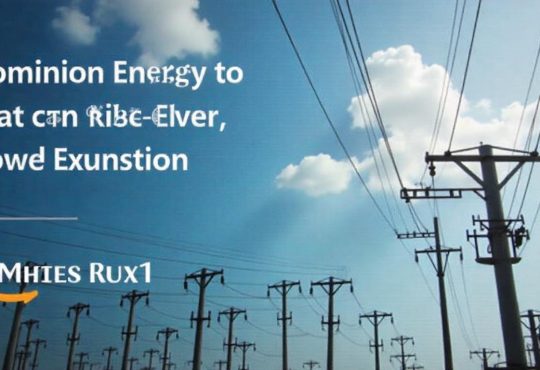
Three Mile Island Nuclear Plant to Restart for Powering Microsoft Data Center
In a significant turn of events, the historic Three Mile Island (TMI) nuclear power plant, infamous for the 1979 partial meltdown, is set to be restarted to power Microsoft’s new data center operations. This move marks a bold shift in the tech giant’s strategy towards sustainable energy solutions, as the global demand for data centers and cloud computing continues to grow exponentially. With Microsoft aiming to achieve carbon-negative status by 2030, the decision to source energy from a nuclear facility could be a game-changer. In this article, we explore the reasons behind this decision, its potential impact, and the broader implications for the future of both the nuclear energy sector and data center infrastructure.
Background of Three Mile Island
Three Mile Island, located in Pennsylvania, is best known for the infamous incident on March 28, 1979, when Unit 2 of the plant experienced a partial meltdown. The accident, although contained without causing any immediate health impacts, led to widespread fear and skepticism about nuclear energy in the U.S. and globally. Since then, the plant’s Unit 1 continued operating until it was shut down in 2019 due to financial difficulties and lack of economic viability in the face of cheaper energy alternatives like natural gas.
However, as the world shifts towards carbon-free energy sources, nuclear power is increasingly being re-evaluated as a reliable, low-carbon alternative. Microsoft’s decision to restart the plant is a testament to this renewed interest, reflecting the tech industry’s growing commitment to sustainability.
Why Microsoft Chose Nuclear Power – Three Mile Island
The demand for data storage and processing power has never been greater. With the rise of cloud computing, artificial intelligence, machine learning, and the Internet of Things (IoT), the energy needs of data centers have skyrocketed. Microsoft, like other tech companies, is facing the challenge of meeting this demand while also adhering to its environmental goals.
One of the primary reasons behind choosing nuclear power is its reliability. Unlike renewable sources like solar or wind, which are intermittent and weather-dependent, nuclear plants provide a consistent and stable energy output. This is crucial for data centers, which require a constant and uninterrupted power supply to ensure smooth operations.
Furthermore, nuclear power is a zero-emission energy source, making it a key player in achieving Microsoft’s ambitious goal of becoming carbon negative by 2030. While the company has made significant investments in renewable energy, it recognizes that nuclear power can complement these sources by providing a steady baseline of power that renewables alone cannot guarantee. – Three Mile Island
The Role of Data Centers in Global Energy Consumption
Data centers are the backbone of today’s digital world, housing vast amounts of data and running critical applications for businesses and individuals alike. However, they are also energy-intensive, with estimates suggesting that data centers consume about 1-2% of the world’s total electricity supply. This percentage is expected to rise as digital transformation continues to accelerate, leading to concerns about the environmental impact of these facilities.
Microsoft’s data centers, which support its Azure cloud platform, are no exception. As the company expands its cloud infrastructure to meet growing demand, its energy footprint also increases. By turning to nuclear energy, Microsoft is not only addressing its current energy needs but also taking a long-term view of sustainability, ensuring that its data centers are powered by clean, reliable energy for years to come.
Advantages of Using Nuclear Power for Data Centers- Three Mile Island
1. Low-Carbon Energy Source
One of the main advantages of nuclear power is that it is a zero-emission energy source. Unlike fossil fuels, which release large amounts of carbon dioxide and other pollutants into the atmosphere, nuclear reactors generate electricity without emitting greenhouse gases. This aligns perfectly with Microsoft’s sustainability goals and the broader global push to reduce carbon emissions to combat climate change.
2. Reliability and Stability
Data centers require an uninterrupted power supply, and nuclear energy is one of the most reliable sources available. Nuclear plants operate at full capacity almost 93% of the time, making them far more dependable than renewable sources like wind and solar, which have lower capacity factors due to their dependency on weather conditions.
3. Energy EfficiencyNuclear power plants are incredibly efficient, capable of producing large amounts of energy from a relatively small amount of fuel. This means that a single nuclear facility can power vast numbers of data centers, reducing the need for multiple energy sources and streamlining operations. –Three Mile Island
4. Cost-EffectivenessWhile the initial costs of building or restarting a nuclear power plant are high, the long-term operational costs can be significantly lower than those of fossil fuel plants. Once a plant is up and running, the cost of fuel and maintenance is relatively low, making nuclear energy a cost-effective solution for powering large-scale data centers over time.
Challenges and Risks Involved – Three Mile Island
While the benefits of nuclear power are clear, there are also significant challenges and risks involved in restarting the Three Mile Island plant.
1. Public Perception
The 1979 incident at TMI left a lasting impact on the public’s perception of nuclear energy. Even though no deaths or direct health impacts were linked to the accident, it triggered widespread fear and opposition to nuclear power. Convincing the public and local communities that the restart of the plant is safe and beneficial will require careful communication and transparency from both Microsoft and the energy operators.
2. Nuclear Waste DisposalOne of the biggest challenges with nuclear energy is the management of radioactive waste. Although nuclear plants produce minimal waste compared to fossil fuels, the waste they do generate remains hazardous for thousands of years. Ensuring the safe storage and disposal of this waste is a critical issue that must be addressed as part of the plant’s restart process.__Three Mile Island
3. Financial InvestmentRestarting a decommissioned nuclear plant is no small task, and the financial investment required will be substantial. The costs of upgrading the facility to modern safety standards, along with the expenses of maintaining and operating it, will need to be carefully weighed against the long-term benefits. However, given Microsoft’s deep financial resources and commitment to sustainability, this investment may prove worthwhile in the long run.
Implications for the Future of Nuclear Energy
The decision to restart the Three Mile Island nuclear plant could have far-reaching implications for the future of nuclear energy, particularly in the United States. As more companies and governments look for ways to reduce their carbon footprints, nuclear power is likely to play an increasingly important role in the global energy mix. If the restart of TMI proves successful, it could serve as a model for other decommissioned plants to be brought back online, providing a much-needed source of clean, reliable energy. — Three Mile Island
Additionally, this move could signal a shift in the tech industry’s approach to energy consumption. As data centers become even more critical to the global economy, the need for sustainable, reliable power sources will only grow. Nuclear energy, with its low emissions and high reliability, may emerge as a key solution to meet this demand.
Conclusion
Microsoft’s decision to restart the Three Mile Island nuclear power plant to support its data center operations is a bold and innovative move that could reshape the energy landscape for both the tech industry and the broader energy sector. By embracing nuclear power, Microsoft is demonstrating its commitment to sustainability and paving the way for a cleaner, more reliable future. While challenges remain, the potential benefits of this decision—both for Microsoft and for the environment—are significant. As the world continues to grapple with the twin challenges of rising energy demand and the need to reduce carbon emissions, nuclear power may prove to be an indispensable part of the solution.



